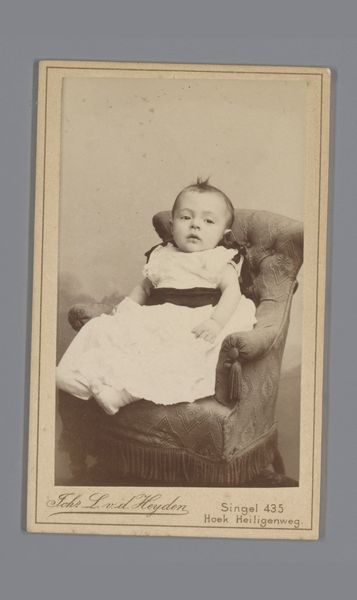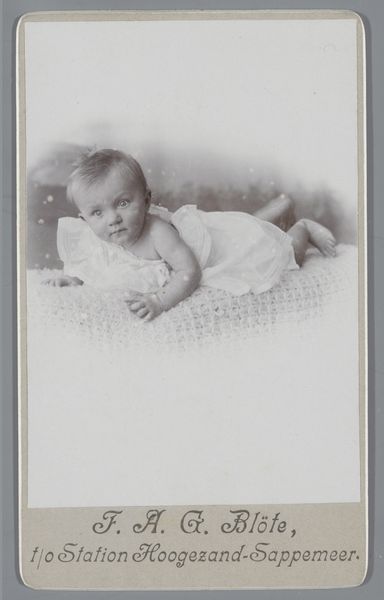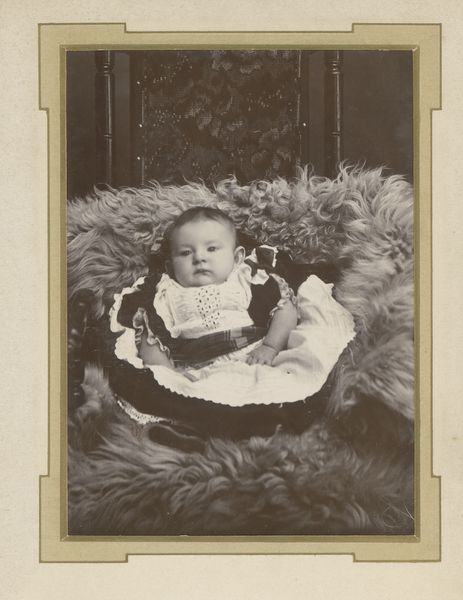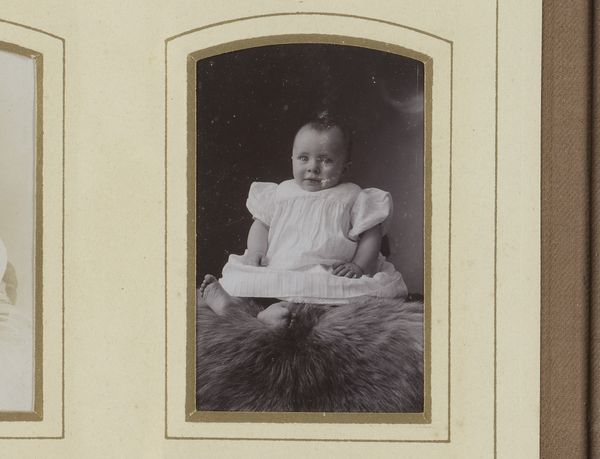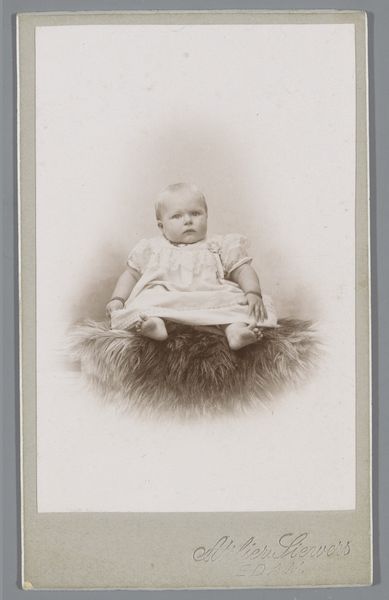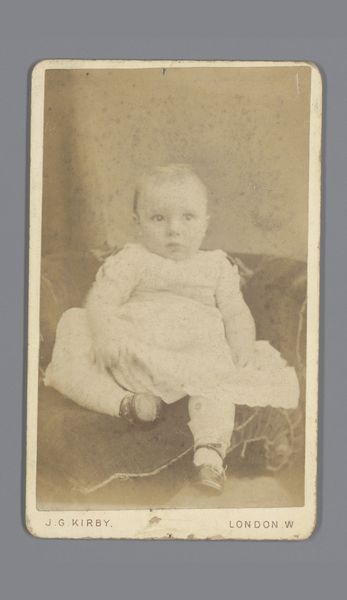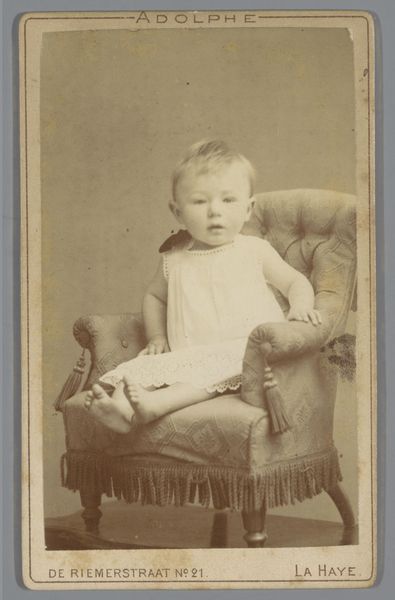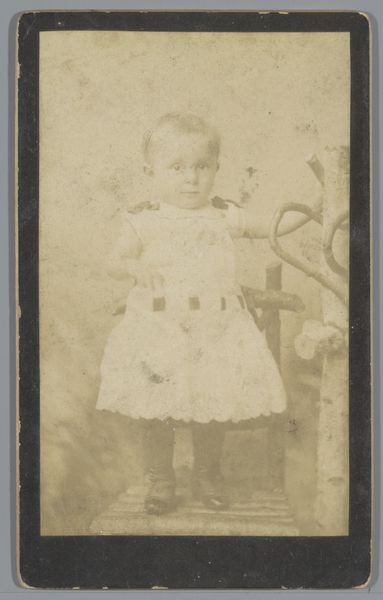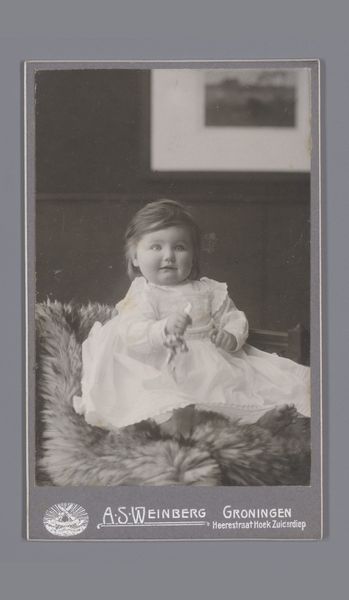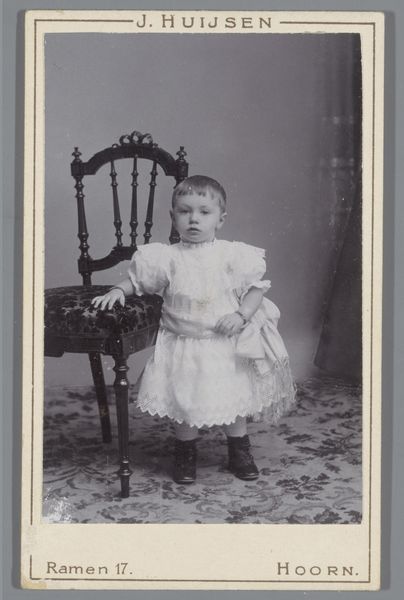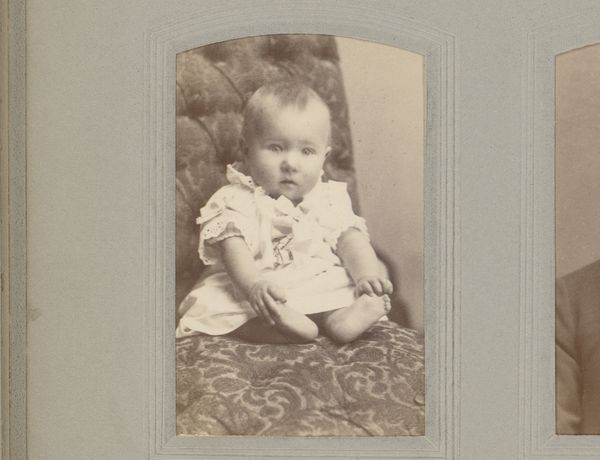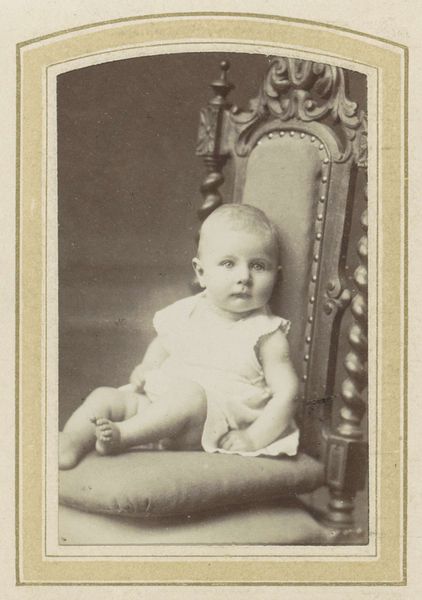
photography, gelatin-silver-print
#
portrait
#
print photography
#
photography
#
gelatin-silver-print
#
genre-painting
#
realism
Dimensions: height 105 mm, width 64 mm
Copyright: Rijks Museum: Open Domain
Curator: This is a gelatin silver print titled "Portret van Pieter Haan" made around 1910 by Alida Beerding. Editor: The image feels immediately… tender, somehow. It's this infant, almost engulfed in a cloud of fur, wearing what looks like a delicate christening gown. It feels very posed, very staged. Curator: Indeed. Portrait photography studios were flourishing at the time. Photographs were becoming more accessible to a broader public, serving a need to document familial milestones. We must also remember the rather high infant mortality rates, so recording likeness became especially significant. Editor: Ah, right, the context of grief. Does that change the photograph's reception? A lot rests on the identity of this person, Pieter Haan. A baby on what appears to be animal fur... How are we implicated in viewing this archival piece? What sort of history does it invoke? Is it intended as a status symbol? Curator: Certainly, the luxurious fur points to a degree of affluence. This photograph marks an interesting shift. While rooted in realism, it utilizes staging reminiscent of genre painting, emphasizing the idealized innocence of childhood. Editor: The lack of contextual information allows a wealth of questions and projection from the viewer. Thinking about this period, the early 20th century…there were obviously great cultural shifts related to industrialization and urbanization and how family changed with them. Was child labor involved? Where exactly in this system does Pieter exist? Is this some weird exploitation? The fact this question needs to be asked… is it something contemporary art takes from old archival photographs, and uses? Curator: It absolutely raises ethical questions around representation, doesn’t it? But ultimately, viewing the photograph also calls upon the shared universal experience of documenting lives. In this portrait, we see the aspirations, anxieties, and the visual conventions of a specific era grappling with modernity. Editor: It’s interesting how an apparently simple photograph unravels into these layers of complex ideas. It gives a fresh reading into how one can analyze images beyond face value. Curator: Precisely. Examining these older photographs encourages dialogues about historical narratives. What histories are foregrounded? Which voices are silenced, which details forgotten?
Comments
No comments
Be the first to comment and join the conversation on the ultimate creative platform.

